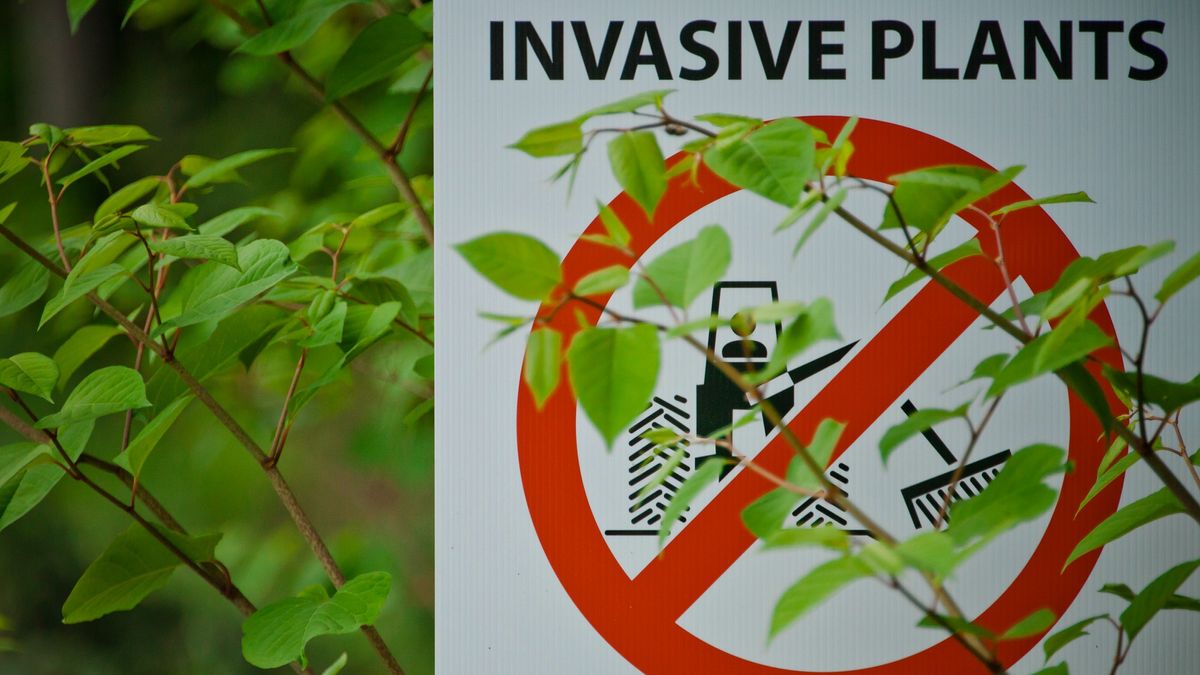When invasive species are introduced to an area where they are not native, they can cause ecological damage. Many times the species are brought accidentally or purposefully through trade then spread rapidly in the new region due to a lack of predators and competition. Climate change is also increasing the spread of invasive species, with the number of alien species on every continent expected to increase 36% by 2050 according to a study published in the journal Global Change Biology. These 5 invasive plants causing problems around the world.
Japanese knotweed
Japanese knotweed is a species native to eastern Asia that has been wreaking havoc in North America and in the U.K. It looks like a “clumpy, bushy bamboo plant,” and “its white flowers, which appear in late summer, are beautiful,” said The Wall Street Journal. It also requires very little care and grows quickly. “These qualities made it very popular with gardeners ignorant to the weed’s inherent evils.”
The beautiful plants can be deadly, as they can degrade wetland habitats. “Dense thickets can reduce sunlight penetration by more than 90%, and its thick mats of dead and decaying vegetation in fall/spring prevent other plant species from growing by shading them out,” said the Invasive Species Centre. The plant can also destroy building foundations for new developments because it grows through concrete and asphalt.
Subscribe to The Week
Escape your echo chamber. Get the facts behind the news, plus analysis from multiple perspectives.
SUBSCRIBE & SAVE
Sign up for The Week’s Free Newsletters
From our morning news briefing to a weekly Good News Newsletter, get the best of The Week delivered directly to your inbox.
From our morning news briefing to a weekly Good News Newsletter, get the best of The Week delivered directly to your inbox.
Guinea grass
Guinea grass is a highly flammable invasive plant species, which greatly contributed to the Maui wildfires. The species is native to Africa but was planted in Hawaii by 18th-century European ranchers. “Today, almost a quarter of Hawaii’s land cover consists of these invasive shrubs,” said the Smithsonian.
“Those fire-prone invasive species fill in any gaps anywhere else — roadsides, in between communities, in between people’s homes, all over the place,” Elizabeth Pickett, co-executive director of the Hawaii Wildfire Management Organization, said to Wired. Along with flammability, the grass “uses a combination of crowding that blocks out light from growing seedlings and what amounts to a chemical warfare in soil that is toxic to native plants,” said a 2023 study by researchers at The University of Texas at Austin.
Hydrilla
Hydrilla, also called water thyme, is an invasive aquatic plant native to Africa and Southeast Asia. It has now made its way to Canada and the southern and eastern U.S. “It is extremely hardy and can grow in many conditions (including low light levels and poor nutrient areas),” said Cornell Cooperative Extension (CCE). It also reproduces quickly and can rapidly outcompete native plants.
“Hydrilla is so successful it can double its biomass every two weeks during the summer and can fill the entire water column up to 20 feet deep, therefore creating a monoculture,” CCE said. Monocultures are ecologically harmful because they can limit food and habitat options for species and reduce biodiversity. In addition, the plant’s rapid growth can “reduce water flow in canals and ditches up to 85% and can clog or damage dams, power plants and other water control structures.”
Kudzu
The deep south of the U.S. has been invaded by kudzu, a climbing vine with severe ecological effects. “An invasive plant as fast-growing as kudzu outcompetes everything from native grasses to fully mature trees by shading them from the sunlight they need to photosynthesize,” said The Nature Conservancy. The plant is extremely resilient and able to thrive in a variety of conditions and soil types.
Along with overrunning native species, kudzu can cause structural damage. “Kudzu can grow over and completely cover anything in its path, including trees, hydro poles, fences, houses and road signs,” said the Invasive Species Centre. “It can cause structural damage to buildings and cause power outages when it grows over poles and interferes with overhead power lines.”
Water hyacinth
The water hyacinth, native to South America, is considered to be invasive in over 50 countries, including those in Central and North America, Asia, Europe and Africa. While the plant produces beautiful flowers, it is “loathed for its ability to reproduce so quickly that it can blanket large portions of lakes and ponds with a thick mat of vegetation,” said NASA’s Earth Observatory. Because of this, lakes can quickly become overrun with water hyacinths.
An abundance of the plant can spell trouble for native plants in a lake or pond. “Submerged native plants became shaded and often die,” the Earth Observatory said. “The resulting decay processes deplete dissolved oxygen in the water and lead to fish kills.” In addition, “boat travel can become impossible with severe infestations.”











